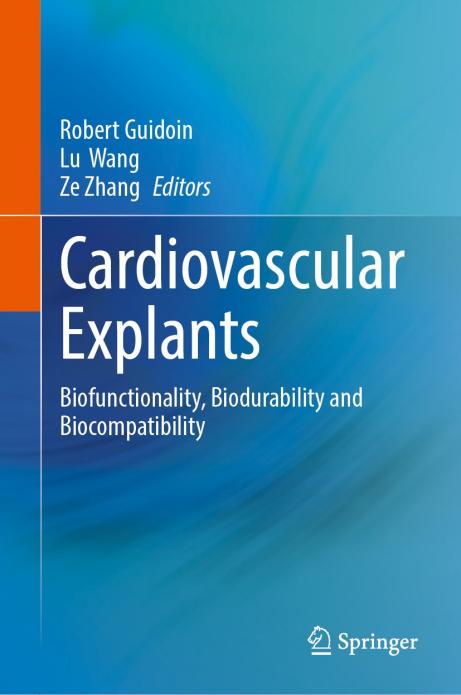The academic monograph ‘Cardiovascular Explants: Biofunctionality, Biodurability and Biocompatibility’, a collaborative effort between Donghua University and Laval University in Canada, has been officially published by Springer Nature which is a globally renowned academic publisher. This pioneering work is the world's first monograph dedicated to in vivo failure analysis of textile-based cardiovascular devices, establishing a new benchmark for the research, development, and clinical evaluation of cardiovascular implants.
This monograph was jointly authored by Professor Wang Lu of Donghua University, Professor Robert Guidoin of Laval University in Canada, and Professor Ze Zhang. It synthesizes the outcomes of 25 years of international collaborative research between Donghua University and Laval University, bringing together contributions from 62 experts and scholars across eight countries including China, Canada, and France. The editorial team exhibits a distinct interdisciplinary character, spanning multiple professional fields including clinical medicine, biomaterials, textile engineering, and pathology. Seven faculty members from Donghua University's Biomedical Textiles Research Team—including Wang Lu, Wang Fujun, and Lin Jing—along with over ten doctoral and master's students, were deeply involved in the research and compilation. The 11-chapter book systematically establishes the first comprehensive lifecycle assessment framework for cardiovascular implants, supported by over 440 images, more than 30 data analysis tables, and over 1,400 references.

The most groundbreaking contribution of this monograph lies in proposing the ‘3Bs’ theoretical framework—three core evaluation criteria: Biofunctionality, Biodurability, and Biocompatibility. Based on extensive research involving recovered human implants, the primary authors demonstrate that traditional bench testing, animal studies, and clinical trials struggle to accurately reflect a device's actual performance within the human body. This research fills a gap in the international database of long-term in-vivo performance for textile medical devices, providing crucial theoretical support and practical guidance for related fields.
The book's academic value has garnered high recognition from the international scholarly community. Its foreword was co-authored by Professor Frederick Schoen, President of the International Society for Applied Cardiovascular Biology and Professor at Harvard Medical School, alongside Professor Jing Zaiping, founder of endovascular surgery in China. The foreword traces the developmental journey from Shanghai Chest Hospital's independent research and development of cardiovascular devices in the 1980s to the transformation and upgrading achieved through the China-Canada collaborative model. As Professor Guidoin emphasized, the future development of medical devices must be patient-centric, fundamentally reshaping the logical framework of medical technology innovation. This philosophy permeates the entire book, embodying the organic unity of medical humanism and scientific exploration.
The biomedical textile research team at Donghua University, leveraging the university's first-class discipline platform in textile science and engineering, has successfully overcome key technical challenges in vascular covered stent fabrics including resistance to blood permeation and pulsatile impact by fully utilizing its textile technology expertise amid a talent gap in North American textile engineering. As new technologies such as biodegradability and renewability continue to emerge, the evaluation system established by this research will drive cardiovascular devices toward safer and smarter development. Moving forward, the team will deepen its interdisciplinary research at the intersection of medicine and engineering, contributing Chinese wisdom and solutions to solving global challenges like developing intelligent cardiovascular repair devices.
Official link for the e-book: https://link.springer.com/book/10.1007/978-3-031-85504-7
